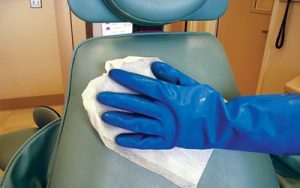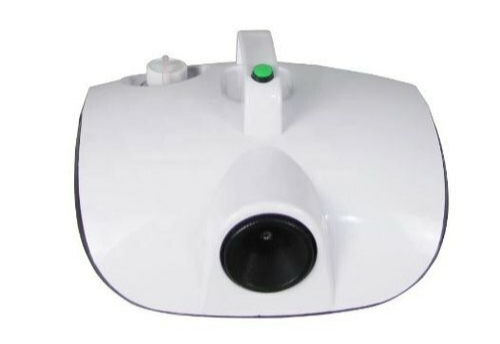COVID-19 Measures
DENTAL OFFICE DISINFECTION SCHEDULE
After Each Treatment
- Rinsing of suction tubes (inside) and suction system
- Rinsing of instrument tubes (inside) and water supply system
- Cleaning of suction system
- Cleaning and disinfecting of surfaces, instrument tubes and upholstery
- Cleaning and disinfecting of handles at dentist element and operating light
- Cleaning and disinfecting of spittoon and filter cover
Dental chair Maintenance Every Morning
- Rinsing of instrument tubes (inside) and water supply system
- Rinsing of suction tubes (inside) and suction system
- Cleaning of suction system and spittoon
Every Evening
- Dental chair maintenance
- Control suction filter inserts
- Rinsing of instrument tubes (inside) and water supply system
- Cleaning of suction tubes (inside), suction system and spittoon
- Cleaning and disinfecting of suction tubes (outside) and instrument tubes (outside)
 Cleaning and disinfecting of suction hose connectors
Cleaning and disinfecting of suction hose connectors- Control suction filter inserts
Each Week or After a Long Downtime
- Cleaning and disinfecting of instrument tubes (inside), water supply system, suction tubes, suction system and spittoon
- Dental chair maintenance
- Hygiene centre
As Needed:
- Control return air filter of turbine
- Cleaning or replacing of silicone pads
- Cleaning and disinfecting of cup filler and cup rest
- Cleaning and disinfecting of instrument holder
Ultraviolet Germicidal Irradiation
Contaminated surfaces, instruments, and airborne particles present in dental and medical settings are a potential health hazard to medical professionals and patients. Although these microbial populations can be minimized through preventive efforts such as pre-procedural rinses, plastics barriers and proper infection control, these microorganisms are still present in the operatory. Sterilization has been thoroughly studied for use in many medical settings and surfaces, but airborne microbes have always been a perplexing area of research. Even though all surfaces and instruments have been sterilized, the air is always a silent contaminator.
Recently, an innovative way to eliminate airborne microbial populations was found through interfering with parts of microbial DNA.
Ultraviolet Germicidal Irradiation (UVGI) is a sterilization method commonly used in hospitals and medical settings to destroy airborne microorganisms. UVGI is most often utilized as a lamp in the operating room for air purification or a lighted box for toothbrush sterilization. This method of sterilization has increased due to its efficacy and ease of use—only lasting a 15-minute duration per cycle3. Ultraviolet Germicidal Irradiation has been used for many sterilization efforts since the mid-20th century, but recently has been used for air sanitization as well as the sterilization of equipment, instruments, and operating room.
UVGI works by communicating with the DNA of bacteria. A short ultraviolet wavelength is used to disrupt microbial DNA by destroying the nucleic acids and removing the reproductive capability2. The germicidal range of ultraviolet radiation is classified as “UV-C” and is within 100-280nm wavelengths-the peak of this wavelength being 265nm. If the ultraviolet radiation is within this range or reaching the peak, it is then able to disrupt the DNA and therefore able to remove reproductive capability. UV-C radiation is the most germicidal, followed by UV-B and UV-A1. The effectiveness of the ultraviolet radiation is determined based upon the length of exposure and will irradiate resistant microorganisms more than once to break them down2. This means the longer a microbial population is exposed to the detrimental ultraviolet wavelength, more microbes are affected and can be targeted more than once or longer if they show resistance.
. In dentistry, Ultraviolet Germicidal Irradiation can be utilized in conjunction with normal infection control, but can also be used while operating the ultrasonic or while operating a slow-speed handpiece, as an added step to ensuring sanitization. Pre-procedural rinses can lessen the microbial count in the patient’s mouth prior to using an ultrasonic or handpiece, but in any event, microbes may still be present. Because of this, using UVGI may help patients feel clean and comfortable in an office, knowing that an extra step was taken to purify the operatory.

